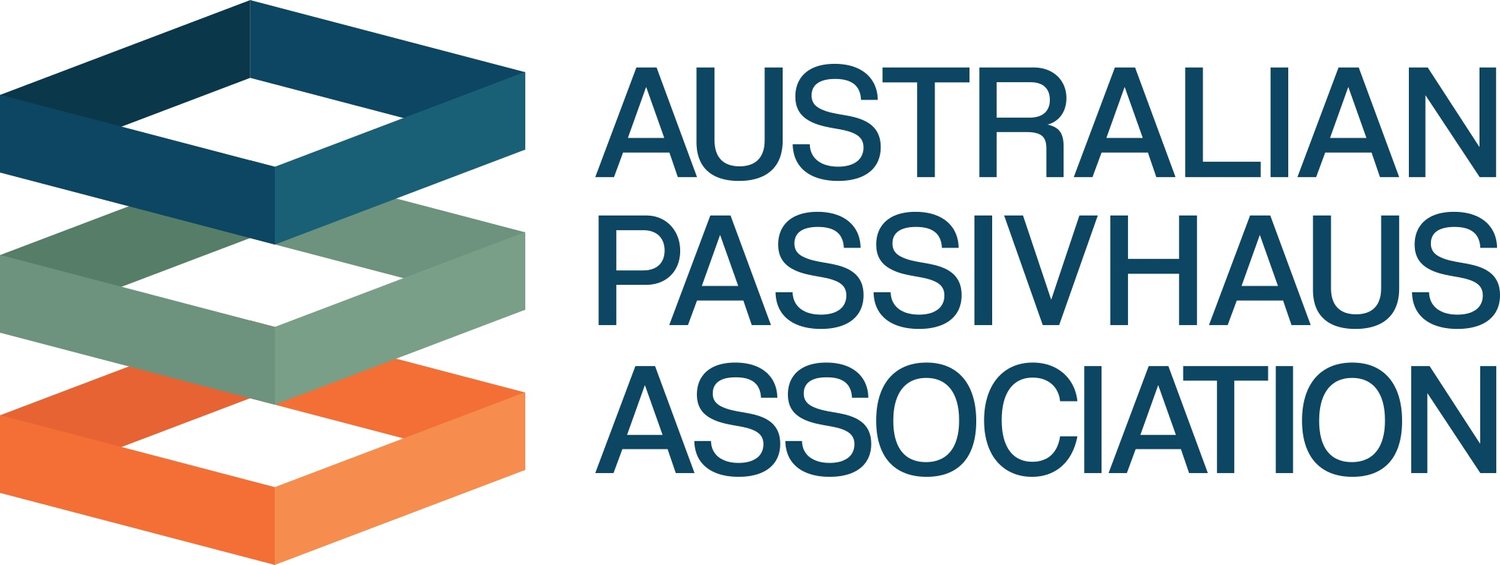One Day Introduction to Passivhaus
Passivhaus is rapidly gaining momentum in Australia as the benchmark for comfort in all our buildings- don’t fall behind.
Course Overview
The One Day Introduction to Passivhaus Training was developed for newcomers to Passivhaus—whether developers, suppliers, trades, architects, engineers, or contractors—who want to learn foundational knowledge about the Passivhaus building standard.
In this course, we’ll cover:
A deep dive into the 5 major principles of Passivhaus, and how we can successfully integrate them into our buildings.
The myriad of benefits that come along with it and the reason why they are so important in today’s climate.
Passivhaus’ suitability for Australia’s varied climate, where Passivhaus currently sits compared to code and how it works alongside other commonly used rating tools.
An in-depth discussion of design processes, construction methods, material choices, product options and more to help guide your buildings towards better outcomes.
Key considerations to be made throughout each stage of a project to help guide your projects towards a truly high-performance outcome.
This knowledge prepares you to complete further Passivhaus education and sets you up to leverage learnings for better building outcomes—namely, energy-efficient, healthy, resilient and more sustainable buildings.
Throughout the course, you will also hear about case studies from industry leaders in the Passivhaus space!
CPD points are now available:
Architects: Informal 6 | Formal 7
Builders & Engineers: 6
Learning Outcomes
Attendees of this course will be able to:
Clearly articulate what Passivhaus is, how it works and the benefits
Work with Certified Passivhaus Professionals on a Passivhaus Project
Understand the fundamentals of high-performance buildings and principles
Please note- This course is not a replacement for the Certified Passivhaus Designer or Trades Course, and attendees of the program will not be able to deliver Passivhaus modelling or projects without the participation of a Certified Passivhaus Designer or Tradesperson.
Participant Benefits
-
You can look forward to the insights into how the impact of our designs and what we specify within them can shape the performance of our buildings, including an understanding of how to integrate the Passivhaus standard into your processes.
-
You can look forward to insights into various construction methodologies, product choices and more that can be used to achieve the Passivhaus standard, alongside a clear reasoning of why these are so important.
-
You can look forward to developing an understanding of the benefits and opportunities of applying the Passivhaus standard across a variety of building typologies and scales of development to better the performance, value, health outcomes and resilience of your projects.
-
You can look forward to insights on building physics and the reasoning behind the core principles of Passivhaus. You will also learn how to translate these principles into better outcomes through their application as well as engagement with clients through every stage of the process.
-
You can look forward to insights regarding how the Passivhaus Standard is being utilised in planning and building policy around the globe to accelerate the trajectory towards net-zero carbon goals. Additionally, you’ll establish the confidence to drive meaningful change in Australia towards a zero-carbon future through measurable and verifiable outcomes for the betterment of all stakeholders.
-
You can look forward to gaining a competitive edge in your career to help shape a zero-carbon future and global insights into the leading edge of energy-efficient building design. Links to valuable resources, materials and networks will help further accelerate your career.
Course Curriculum
-
Introduction to the Principles of Passivhaus:
• What makes a Passivhaus, a passive house? We’ll take an introductory dive into the 5 main principles that define a Passivhaus and how they are applied.• The end goals of a Passivhaus and what impact it has on both the people inside the buildings and out.
• The overarching global context that necessitates Passivhaus and why it is an integral part of facing the challenges we are up against today, including its relevance in the Australian climate!
• A brief look at the history of Passivhaus internationally and where it sits today in Australia in terms of its current adoption and standing within code and rating tools.
• The cost implications of a Passivhaus.
The Passive House Criteria:
• Learn the different criteria we use to determine if a building is up to Passivhaus standards.• We also look at how Passivhaus stacks up against the current Australian code.
Building Physics 101:
• The main considerations we need to consider when designing a healthy, high-performing building. I.e. How energy moves through our buildings, what makes a building comfortable and healthy and the impacts of climate, building form, materials and more have on performance.• An overview of how to consider the energy balance of our buildings and how can we truly understand what units like the R-value and U-value of materials mean and how can we take advantage of them through the application of a continuous insulation barrier.
-
Thermal Bridging:
• Why high levels of insulation alone aren’t enough to guarantee great performance in our buildings.• Thermal bridge overview, how we measure them and some of the different types of thermal bridges we may encounter.
• How can we avoid thermal bridges through our designs and the construction methods we specify; and where they are unavoidable, how we can mitigate their impact.
Airtightness:
• Why is airtightness so important to the health and performance of our buildings, and where does Australia currently sit in terms of considering this metric?• What are some of the various materials, construction methods and design processes we can use to help ensure a high level of airtightness in our buildings?
• Common pitfalls which could lead to a poor outcome in airtightness, and how we measure our performance.
Ventilation:
• Why effective ventilation is absolutely necessary (especially in airtight buildings) to ensure great levels of comfort, health and high performance in our buildings.• A look at some of the dangers of poor ventilation including condensation, mould and high levels of CO2.
• How we can use a heat-recovery ventilation system to minimise the impact of constantly exchanging indoor air with outdoor air.
• The different forms of ventilation we can rely on, and how can we design buildings to maximise the use of all of them concurrently.
-
Windows:
• Why windows, and the frames that we choose, are some of the most important elements in managing energy transfer in our buildings.• How we can rely on passive solar design principles i.e. orientation, placement and shading to maximise the performance of our windows and give us free energy!
• We look at a variety of different window constructions and installation methods, and how we can calculate their performance and impact on overall energy balance.
Energy & Renewables:
• An overview of major energy consumptions in our buildings and how we can reduce them.• Why it matters where our energy comes from, and how we can significantly impact this through the use of renewables.
• How the Passivhaus Standard considers energy metrics and the strategies we can use through design, construction, and service choices to improve our performance.
The Passivhaus Planning Package (PHPP):
• An introduction to the Passivhaus Planning Package, the design tool used by Passivhaus designers to ensure their buildings are meeting the required criteria.• Why it is such a useful tool for testing design options, the key inputs it requires and the outputs it can provide us.
-
Passivhaus Classifications:
• An overview of the different Passivhaus classifications which are available, and the criteria specified for each of them.• An introduction into the Passivhaus retrofit standard, EnerPHit, for existing buildings and how we can up-spec existing buildings into the realm of a Passivhaus.
Certification:
• A discussion on the certification procedure for obtaining Passivhaus recognition, including when to engage consultants and certifiers in the design process.• Steps that you can employ in your process to give you the best possible chance of certification and ensure all relevant streams are onboard the Passivhaus journey.
Course Recap and Wrap-up:
• A review of all the content we’ve covered so far and a chance to dive into any specific areas the attendees would like.• Laying out some of the possible next steps in your Passivhaus journey and where to take it from here!
Course Pricing
Member
Early Bird Price: $435
Full Price: $485
Non-Member
Early Bird Price: $525
Full price: $595
*10% GST added at check out for all listed pricing
APA Members save over 15% on this course. Apply today.
Upcoming Courses
The One Day Introduction to Passivhaus course is delivered in person over one day from 9 am - 5 pm AEST local time.
All prices are in AUD.
2025
Melbourne - September 24, 2025
Held at: DesignInc, Melbourne
Early bird ends September 10
Sydney - November 7th, 2025
Held at: Proclima, Sydney
Early bird ends October 24
Melbourne - November 14th, 2025
Held at: DesignInc, Melbourne
Early bird ends October 31
2026
Melbourne - February 27, 2026
Early bird ends September 10
Sydney - February 27, 2026
Early bird ends October 24
Brisbane - February 27, 2026
Early bird ends October 31
Adelaide - February 27, 2026
Early bird ends October 31
Tasmania - February 27, 2026
Early bird ends October 31
Perth - February 27, 2026
Early bird ends October 31
In-House Passivhaus Training and Group Pricing Options
Many of our clients talk about the significant benefits of knowledge transfer with group training, as participants have a cohort to cross-reference lessons learnt and content by following the training during their practical application at work. Our pricing is structured so that the more you have on board, the more you’ll save.
Get in touch today to see our group price offering.
Course FAQs
-
Yes, a company may be able to register their staff to attend this program. Discounts are available you have a company membership, for any staff listed in the membership's sub-profile, including discounts on courses and events. Once the staff member's sub-profile is activated, they can register for the course or event through their profile.
-
Online - It is a two-week course with two sessions per week on Mondays & Wednesdays, from 4:30 - 6:30 pm
Face to Face - it is one day training program
-
You will receive a view only version of the slides once you have attended the course. These slides are available for a limited time.
Our Educators
-
Experienced Director with a demonstrated history of working in the architecture & planning industry.
Skilled as an Influential Communicator and in sustainable design. Strong professional with a Bachelor of Architecture (BArch) specialising in Sustainable Architecture from the University of South Australia.
-
‘Certified Passivhaus Consultant’ is my evolution from Solar Passive Design.
My aim of better insulated external building envelopes and more manageable thermal mass has lead me to this high comfort, low energy construction system that provides exceptional indoor air quality and very low energy costs.
A career based around design and detail has fit me for the rigorous attention to the quality of the construction process that will become the norm as energy prices continue to rise and sustainability becomes the norm.
-
I am a Certified Passive House Consultant based in Sydney, Australia.
I completed my Bachelor of Architecture and Bachelor of Civil Engineering at the University of Sydney. Following my studies, I worked as a Structural Engineer for a few years, before coming across the Passivhaus (Passive House) Standard.
In my engineering work, I was lucky to work with many award-winning architects and builders on some pretty amazing houses, sculptures, and commercial structures.
I’m a big advocate of form and function. I believe in beautiful designs that also fulfill purpose and efficiency!
Now I consult on thermal modelling using Passivhaus methodology. I love working in this space where building design combines with science and sustainability.
Hear from past participants
Who relies on our training



















